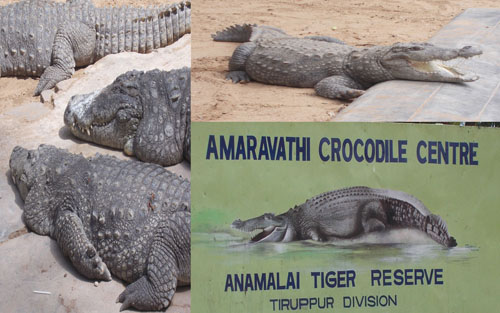Thiruparankundram
The Beauty and Spirituality of Thiruparankundram in Madurai
Thiruparankundram is a small town located in the Madurai district of Tamil Nadu, India. It is famous for its ancient cave temple, the Thiruparankundram Murugan Temple, dedicated to Lord Murugan, one of the most revered deities in Hinduism.
The Thiruparankundram Murugan Temple an ancient temple built in the rock-cut architecture style. The temple mentioned in many ancient Tamil literary works and believed to constructed in the 6th century by the Pandya kings.

The temple is unique in many ways. Only temple in India where Lord Murugan worshipped with both his consorts, Devasena and Valli. The temple also considered to be one of the six abodes of Lord Murugan.
Apart from the main sanctum, the temple has several other shrines dedicated to other deities such as Lord Shiva, Lord Vishnu, and Goddess Durga. The temple is also famous for its striking architecture and intricate carvings, which reflect the rich cultural heritage of the region.
Thiruparankundram also a popular pilgrimage site for Hindus, especially during the festival of Skanda Sashti, which celebrated with great fervor at the temple. The town is also a popular tourist destination and attracts visitors from all over the world who come to experience the rich history and culture of the region.
Also Check out: Places to Visit in Madurai
Arulmigu Subramaniya Swamy Temple
The Arulmigu Subramaniya Swamy Temple, located in Thiruparankundram, Tamilnadu, India is a significant Hindu temple devoted to Murugan (also known as Kartikeya and Subramaniya Swamy). It considered one of the “six Abodes of Murugan” and constructed using rock-cut architecture that believed to have been built by the Pandyas in the 6th century. According to the legend, the temple is where Murugan defeated the demon Surapadman and wedded Deivayanai, the daughter of Indra, the king of heaven. Murugan also said to have worshipped his father, Shiva, here as Parangirinathar.
This temple is located approximately 8 kilometres (5.0 mi) from Madurai in India and features deities like Shiva, Vishnu, Vinayaka (Ganesha), and Durga in addition to Murugan. The temple follows the Shaiva tradition of worship and holds six daily rituals and three yearly festivals, with the Kantha Sashti festival during the Tamil month of Aippasi (October – November) being the most prominent. The Hindu Religious and Endowment Board of the Government of Tamil Nadu administers and maintains the temple.
History
The Thiruparankundram Murugan temple, located in Tamilnadu, India, believed to have been originally a Jain cave as per inscriptional evidences. Another theory suggests that the temple an existing Murugan temple that was later converted into a Jain shrine by Pandya king Koon Pandiyan. It eventually converted back into a Hindu temple during the 8th century by the minister of a later Pandya king, Gajapathy.
The temple underwent several additions during the reign of the Madurai Nayaks, including the construction of pillared halls.
Arulmigu Subramaniya Swamy Temple Architecture
The Arulmigu Subramaniya Swamy Temple, Thiruparankundram situated on the Madurai – Tenkasi road, 8 km (5.0 mi) away from Madurai. The temple showcases rock-cut architecture dating back to the Pandya era of 6th
century and the mandapas’ life-sized sculptures during the 16th century Nayaka period.
The entrance features an Aasthaana Mandapa with artistically carved pillars leading to a towering 150 feet (46 m) high seven-tiered rajagopuram. The granite hill located behind the temple has a shrine of Kasi Viswanatha (Shiva) at the top, standing at 1,050 ft (320 m).
The temple’s image of Vinayaka (Ganesha) holds sugarcane and fruits, and the inner rock-cut image made from a single stone. Currently maintained and administered by the Hindu Religious and Charitable Endowments Department of the Government of Tamil Nadu.
The Arulmigu Subramaniya Swamy Temple in Thiruparankundram has three halls – the Kambathadi Mandapam, Ardha Mandapam, and Mahamandapam – which lead to the sanctum.
The main shrine is a rock-cut temple and has cells for the deities Murugan, Durga, Vinayaka, Shiva, and Vishnu. These statues are all carved on the wall of the Parankundram rock. Lord Shiva worshipped as Parangirinathar, and his wife Parvati worshipped as Aavudai Nayaki. The temple also has panels depicting Shiva’s dance of bliss outside the sanctum.
Also you can visit Madurai to Kodaikanal tour
This temple is unique in that the main shrine has both Shiva and Vishnu facing each other, which is rare in Hindu temples. The temple also features a water tank where devotees can feed the fish. A Vedic school is located on the banks of the temple pond. Outside the temple, there is a Nandi (bull), Mayil (peacock), and mouse, which are the Vahanas (vehicles) of Shiva, Murugan, and Vinayaka, respectively.
The Shadashara Padigal, a flight of six steps, leads to the Ardha Mandapam where rockcarvings of Mahisshasura Mardini (Durga), Karpaga Vinayagar (Ganesha), Andarabaranar, and Uggirar can be seen.
The temple has five water bodies: Saravana Poigai, Lakshmi Theertham, Saniyasi Kinaru, Kasi Sunai, and Sathiya Koopam.



Pingback: 27 Best Places to Visit in Madurai - Tourist Interest, Festivals - Kodaikanal Travelogue